Last weekend featured my first foray into the world of making paella, a classic Spanish dish in which meats and rice are cooked together with vegetables. Getting the timing right so all components cook properly has always seemed intimidating.
Why? How?
Our Whole Foods has been featuring sales on local seafood, so I wanted to try a seafood version. I followed this recipe from the Food Network, but with a few modifications. I used one fresh andouille sausage and also used just a few spoonfuls of crab meat in lieu of 6 entire blue crabs. I doubled the mussels instead of using any clams. Actually, I used a whole bag of mussels which turned out to be a little excessive. Finally, I took commenters’ advice to delay adding the seafood until the last 15 minutes of cooking.
Overall, this meal was easier to make than I expected, and it turned out well. Pre-cooking the chicken and sausage and cleaning and prepping the shrimp took some time, but the actual cooking and combining process was fairly straightforward. While adding the seafood later in the cooking process ensured these delicate meats were not overcooked, it also cooled down the simmering rice and delayed the completion of the rice somewhat. Finally, I think it would benefit from more rice and vegetables relative to the protein.
Saffron Thoughts
The key ingredient in “authentic” paella is saffron. As the the Wikipedia page notes, saffron is made from the dried sex organs from the center of the flower of a particular crocus that originated in Greece or Southwest Asia, Crocus sativus. Saffron lends food both a distinctive flavor and a vibrant yellow-orange color.
This all-natural ingredient has been enhancing human meals for 3,000 years. Since cultivation and collection of the threads is a painstaking process, and the spice is costly, saffron has long been associated with luxury and special occasion foods. The high price for these virtually weightless flower parts made them an important element of the spice trade that featured other expensive botanical treats like peppercorns and cloves.
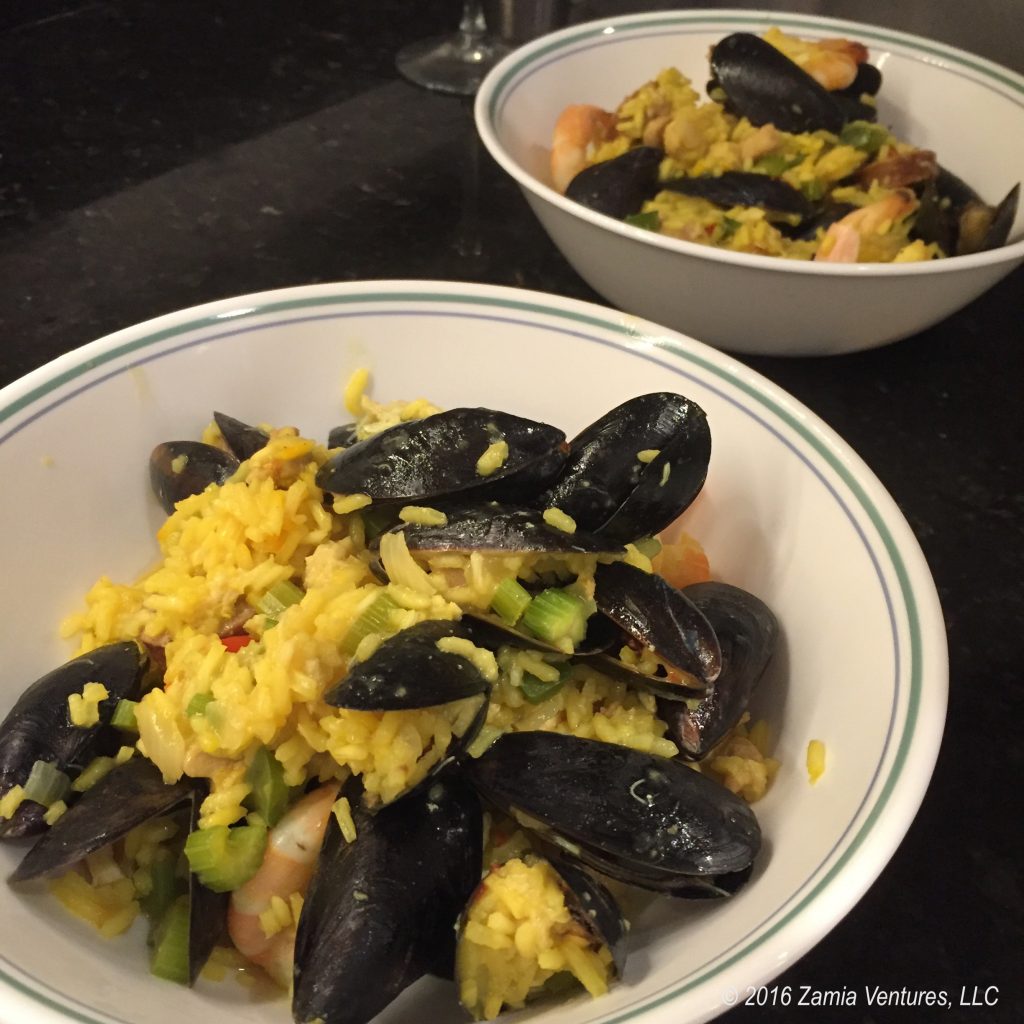
I have somewhat mixed feelings about enjoying this ancient luxury item. On the one hand, it’s an amazing testament to global trade networks that I am able to purchase a product at Whole Foods for less than $10 that likely would have cost a small fortune any time in human history until the very recent past. On the other hand, I wonder if Central Asia is filled with saffron “sweatshops” with workers harvesting threads from flowers at low pay for long hours.
Also, while we try to eat all natural products, and organic to the extent possible, I wonder whether a simple product like flower parts can withstand the pressure from synthetic flavors that have been industrially engineered to appeal to human tastes. As American food brands become popular around the world, I’m a little worried that exotic flavors with ancient roots will fall out of favor. Fortunately, I think there’s enough interest in preserving food heritage — including in the U.S., where interest in foreign food seems to be perpetually increasing — that saffron and its fellow botanical seasonings are here to stay!
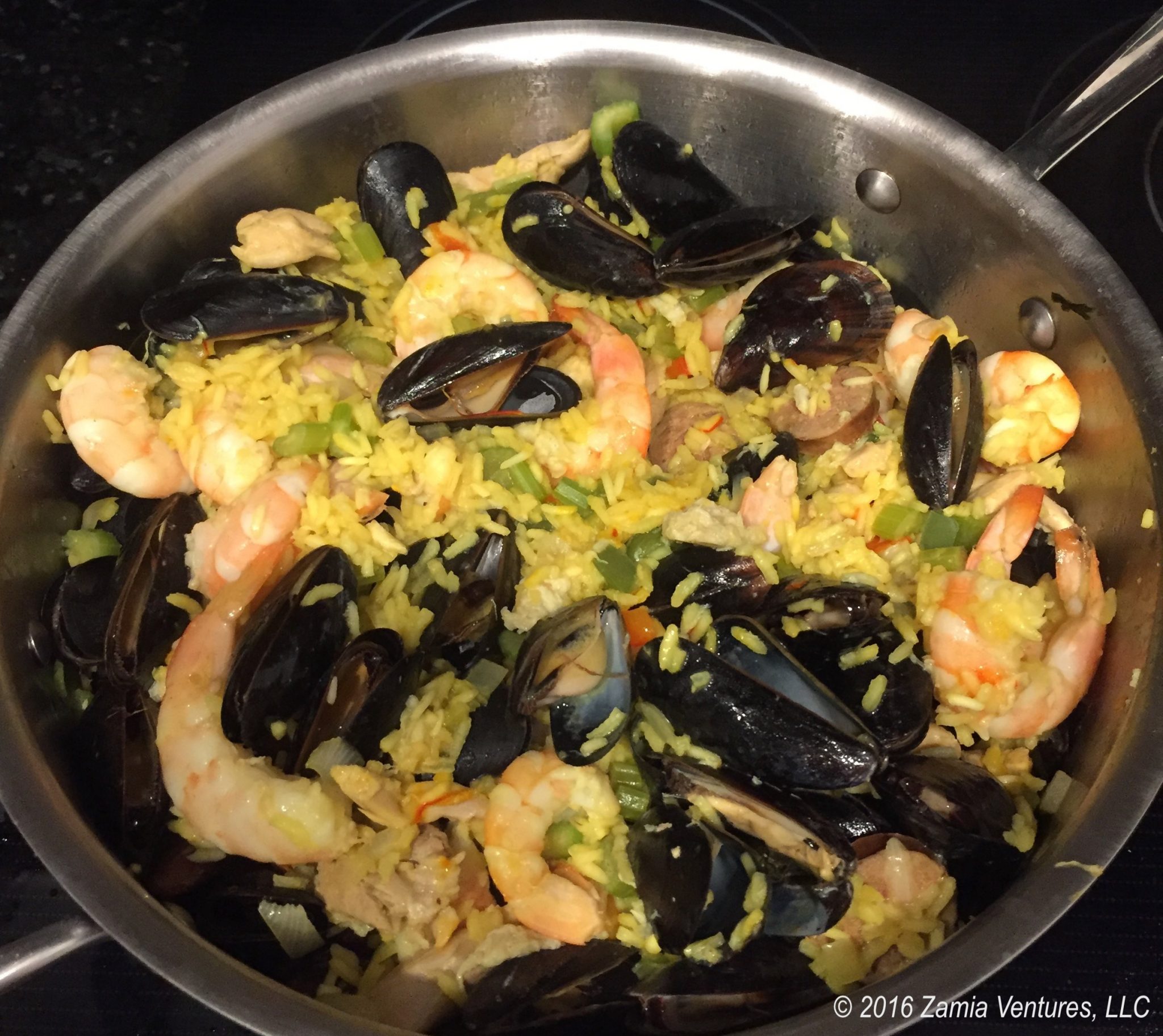
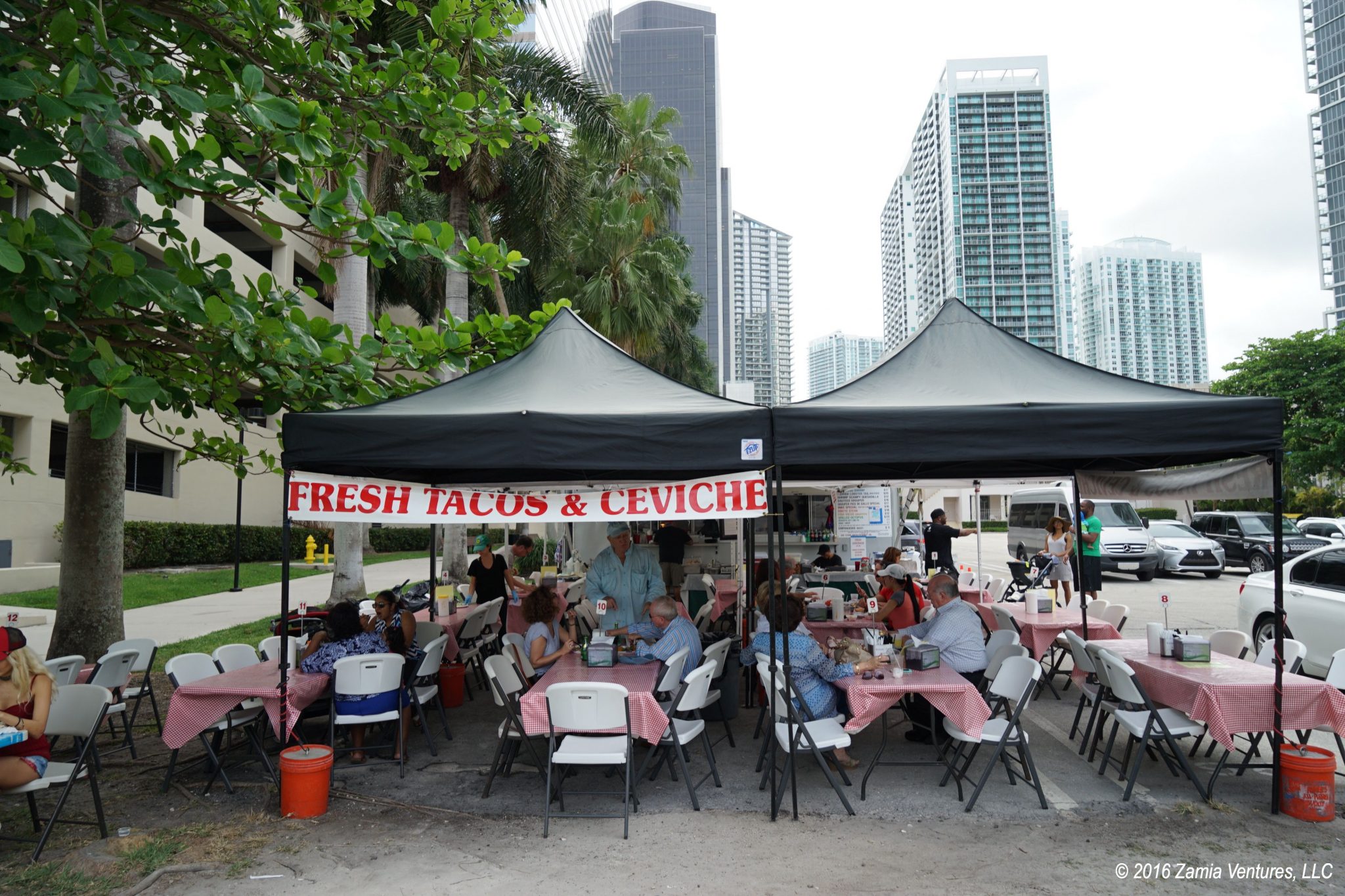
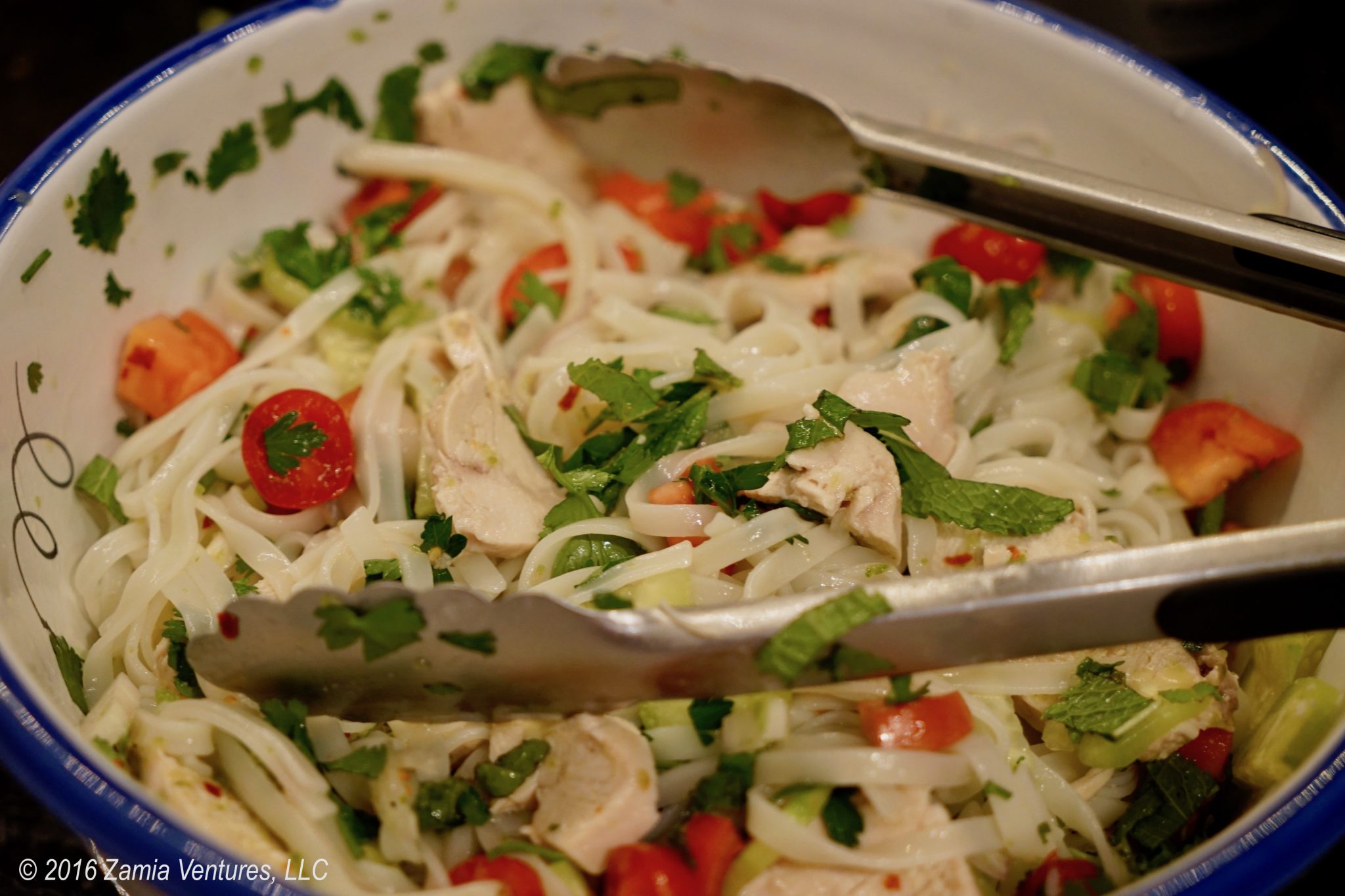
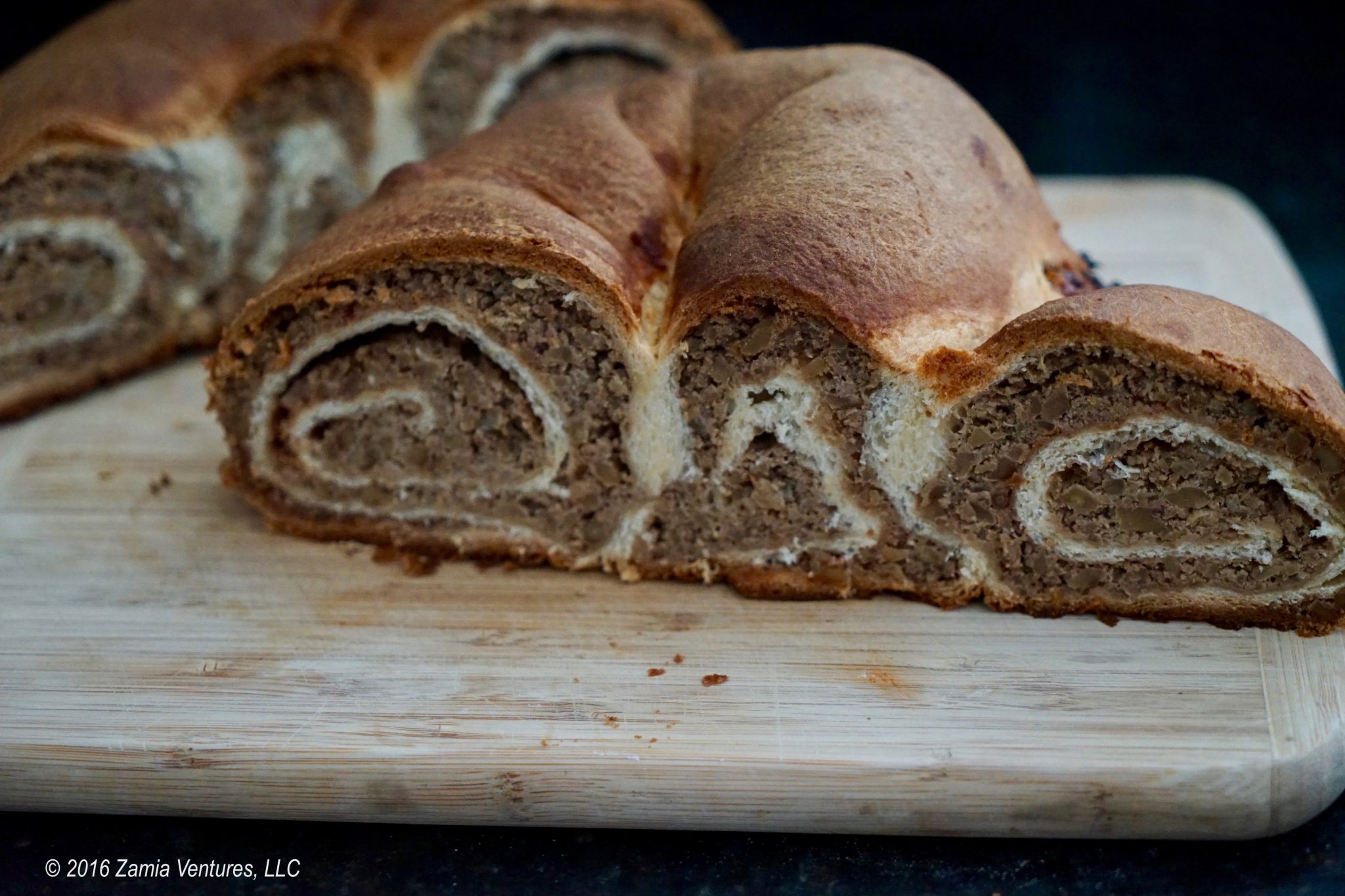
1 thought on “Paella Experiment and Thoughts on Saffron”